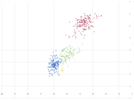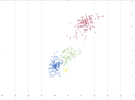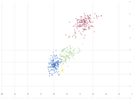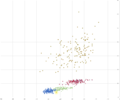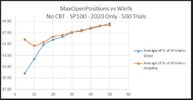- Joined
- 8 June 2008
- Posts
- 14,055
- Reactions
- 21,156
Yup, anyone that does proper analysis and understands systems would not seriously suggest that a random system CONSISTANTLY beats the index. That is just a naïve statement.
I think people should read that article.it actually highlighted what i king of felt when commenting the fact i understood index beaten by random if asx20 falling behing small capsView attachment 122479
There's a great article by Andreas Clenow HERE on the subject of why randomness will beat the index / funds.
Market weighted indexes will always consistently be beaten by a (selective) random system.
This is big as this means we should compare our system not to index plus div but to a non market weighted index plus div.
Is there even such a thing here in OZ?
I hope this will not be forgotten and lost.
On the other end, as opposed to financial advisors, i care less about beating the index than the actual number of $ on my account
At the end of the month.i see no joy in only losing 40% if the ASX is down 50%?.but we need benchmarks

